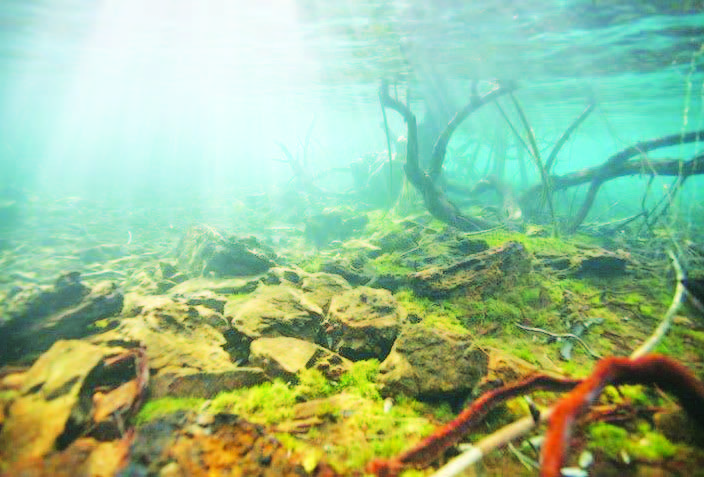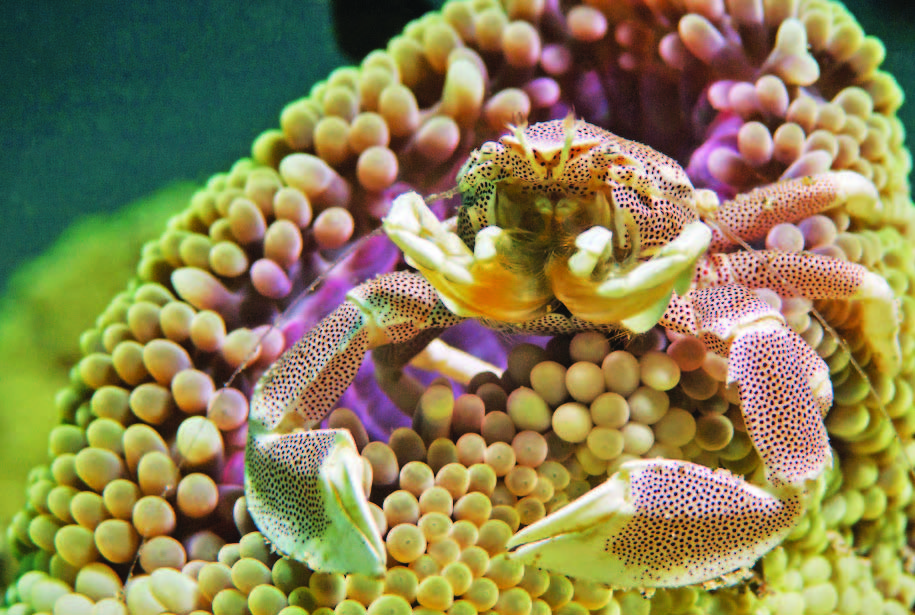The purple Matano and Sulawesi crabs are put in the spotlight due to their bright rich colors, with the Matano ones being more known for their deep, rich purple hue. Native to Indonesia and fairly new to the aquarium scene, they are seen as great additions to the terrarium. But what do we really know about these crustaceans?

I scoured Google to find answers, but even in the vast world of the internet, there was barely enough information to get an in-depth knowledge of these crabs and how they went about with their lives. Joanna, a pet store manager, was kind enough to divulge more information about them and how they lived in the wild before they were put in terrariums.
Doctors of Lake Sulawesi
Purple Matano and Sulawesi crabs act like doctors of the lake, serving as its health indicator. They are sensitive to water waste and once their numbers decline, it is a sign that the lake is polluted.

“Their role in their natural habitat is important. They balance the ecosystem of the lake,” says Joanna. By serving as the lake’s cleanup crew, they scavenge for food, such as decaying matter that become pollutants otherwise. They also serve as predators who hunt down sick and dying animals, lessening the pollution from their rotten remains.
From scavenger to predator
These colorful crabs are similar to our other crustacean friends: They’re scavengers by nature. They grab what they can at the bottom of the lake from dead fish to decaying organic matter, such as leaves, seaweeds, and algae.

However, if given the chance, they can also become quite predatory. With their pincers, they can catch small fish and some inverts like shrimps, or even smaller crabs of their own species or others.
Aquatic creatures in captivity
Since there has yet to be any proper documentation of how these crabs thrive in captivity, no one knows what really happens to them while in tanks. But for most animals, stress is expected when in captivity, starting with transport from their natural habitat to the store, then from the store to the buyer. There’s also the issue of being taken from a huge lake to a small tank. Even if you decorate it beautifully, the size and surroundings won’t compare to the real deal.

While information is available regarding the proper care of these crabs, not everyone can do things right all the time. In inexperienced hands, these crabs may suffer and perish, just like any other animal. In the wild, they may have a better chance of multiplying as much as nature needs to sustain the ecosystem and keep it thriving.
Lakes versus aquariums
There hasn’t been any study yet on how captivity fully affects these crabs. They are said to live longer if they are given the right aquarium requirements. In the wild, it is possible that their lives may be shortened by predation or disease, but even that can happen in an aquarium.
From predator to prey
Like other smaller creatures, these crabs are prey to other species. While they’re young, they can be targeted by large fishes or by adults from their own species.
Hide and seek
These crabs are usually found hiding in rock crevices in the lake. They also occupy areas where there’s lots of vegetation. Being nocturnal animals, they usually emerge from their spot during dawn or dusk to hunt and scavenge.
Butterfly effect
With increasing demand for purple Matano and Sulawesi crabs, the ecosystem from where these unique crustaceans come from is in danger. Because they play an important role in maintaining the cleanliness of the lake, their dwindling number may cause problems for the lake’s biodiversity. Without them thriving in the lake, there will be a lack of visible indicators as to the lake’s condition.

The predators who feed on them will also have to do with other lake creatures, potentially creating a shift that can mess up the food chain.
How to be a proper crustacean guardian
While it’s nice to have beautiful creatures in the aquarium, it’s even better to have beautiful creatures in nature where they’re not in any danger of extinction and exploitation.
To truly appreciate their beauty means to do so when they’re in their natural habitat, in the wild where they belong. They were born in the lake, where they thrive and play a major role in maintaining balance. Sad as it sounds, the purpose of their existence is not for them to be ogled at in aquariums as objects on display.
Lake Sulawesi will remain a worthy destination for as long as there are purple Matano and Sulawesi crabs thriving in it waters. In their own element, their true beauty shines.
This appeared in Animal Scene magazine February 2019 issue.





